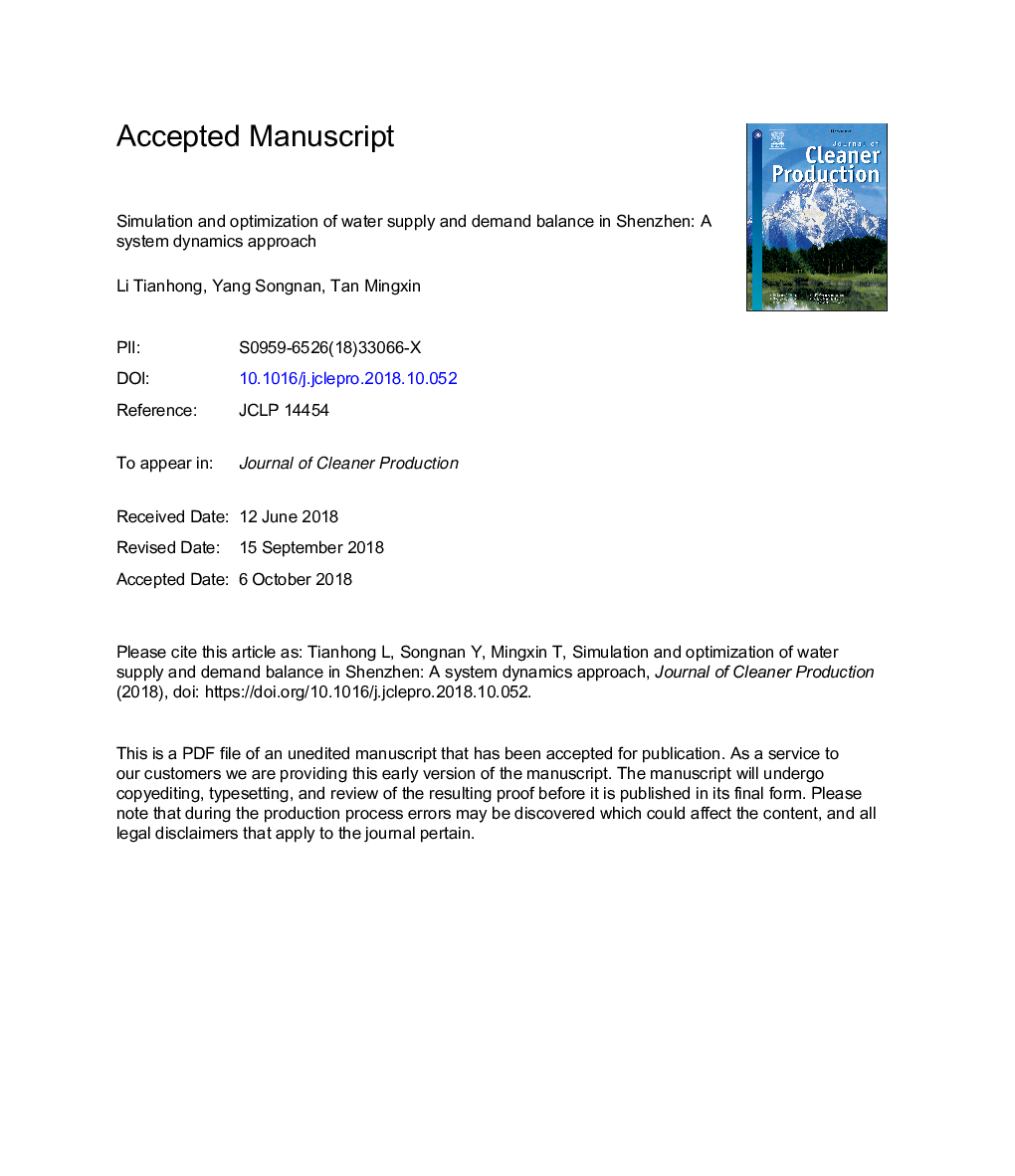| Article ID | Journal | Published Year | Pages | File Type |
|---|---|---|---|---|
| 11262904 | Journal of Cleaner Production | 2019 | 34 Pages |
Abstract
As a typical rapid urbanization area and an emerging scientific and technological creative center, Shenzhen is confronted with the pressure of balancing water supply and demand. Based on clarifying the whole water cycle of the city, a system dynamics model was constructed to investigate the complex interactions throughout the water cycle within the social-economic-ecological system. Water supply and demand in Shenzhen City was simulated from 2015 to 2030. The results show that the water supply and demand (WSDR) of Shenzhen will steadily decline in future years, which indicates a serious scarcity of water resources and conflicts between water supply and demand in this region. Based on the sensitivity analysis, six parameters were identified as the most influential factors on water supply and demand in Shenzhen. They are the growth rate of secondary industry, the growth rate of tertiary industry, the utilization rate of surface water resources, the comprehensive utilization rate of wastewater, the per capita domestic water demand and the water consumption per unit of value of added industrial output. To avoid water resource shortages in the future, a scenario analysis was conducted using these parameters as control variables. The values of these control variables were set with integrated social and economic development targets. The results showed that water supply and demand (WSDR) will increase from 0.89 in the baseline scenario to 1.04 in the optimized scenario in 2020 and from 0.64 to 1.05 in 2030.
Related Topics
Physical Sciences and Engineering
Energy
Renewable Energy, Sustainability and the Environment
Authors
Li Tianhong, Yang Songnan, Tan Mingxin,
